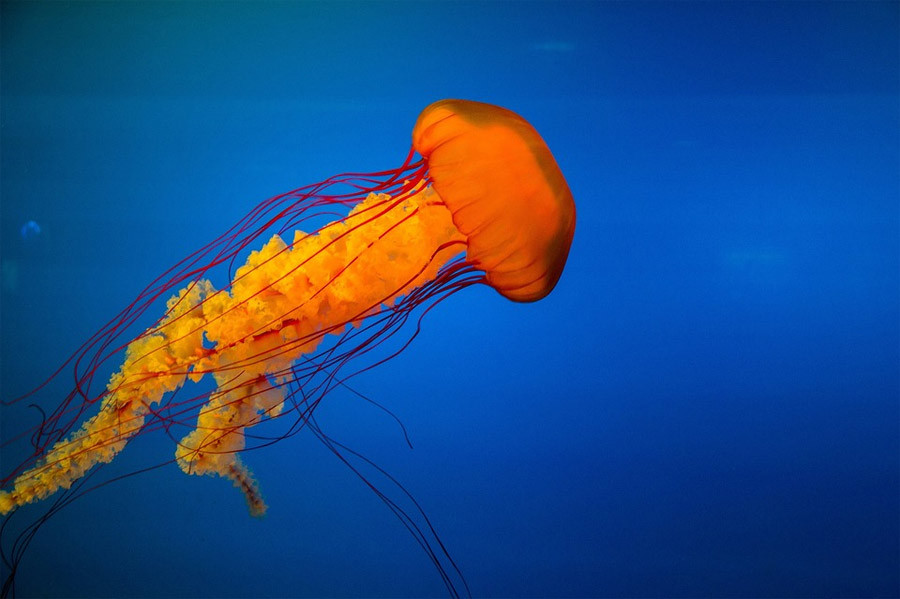As continued hot weather brings more jellyfish close to beaches, an expert at Monaco’s Oceanographic Museum has given detailed advice for bathers who encounter jellyfish while swimming in Monaco or along the coast.
Olivier Brunel, head of the Aquarium Department of the Oceanographic Museum of Monaco, told local French daily Monaco Matin that there are five points to remember about the jellyfish hazard.
Firstly, he said that they are the visible evidence of global warming. “There are fewer and fewer predators, such as turtles or seabirds, because of pollution, and overfishing is also impacting jellyfish competitors, who feed on the same zooplankton,” he said. Jellyfish have returned each year to the Riviera, which was not the case a decade ago.
Of the three or four species that can be found on the French Riviera, the best known and with the most powerful sting is pelagia (Pelagia noctiluca). “Its sunshade is between 5 and 20 cm, translucent and with pink and purple hues,” Mr Brunel said.
Their filaments are used to fish. The jellyfish deploys its filaments to catch the maximum of small fish or plankton. The latter are covered with stinging cells that kill the prey they capture. In reality, when they bite, they are looking for food.
Fourthly, the jellyfish may stay until this winter, and possibly through the year.
Lastly, Mr Brunel advises victims of a jellyfish sting not to rinse the area with fresh water. When the filaments are on the skin, they cling and inject venom. Fresh water breaks up the remaining cells on the skin, while seawater removes them. Swimmers who have been bitten should leave the water, rinse the wound with sea water without rubbing it, cover it with sand, let it dry, then remove the sand with stiff cardboard to remove the stinging cells still present.
Rinse again before applying an antiseptic cream. Never touch jellyfish stranded on the beach, even dead, as they retain their stinging power.
